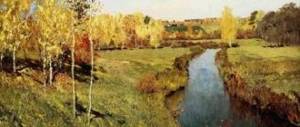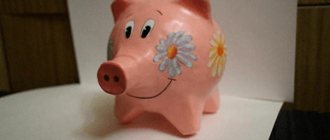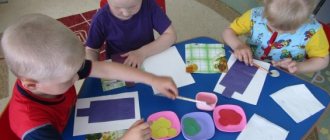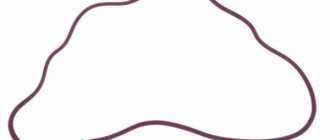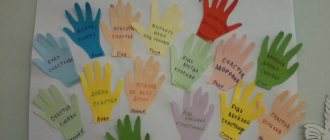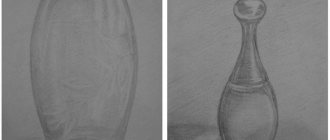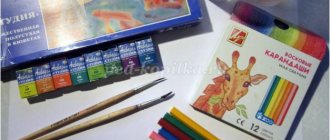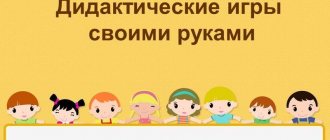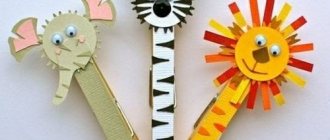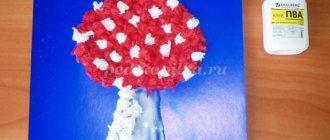The essence of the ebru technique as an unconventional way of drawing
Ebru is an ancient art technique that involves painting on water with liquid paints. The essence of this method is that water and paints have different densities, due to which the latter do not spread or dissolve, but leave an expressive pattern on the surface in the form of a thin film. After creating a design on water, it is carefully transferred to paper or fabric (the material is simply applied to the liquid).
The water is made more dense by the addition of special substances. Initially, it was a plant extract that was extracted from the thorns of the geven plant and infused for more than a week. Today, art stores sell special ready-made bases for mortar. During the work process, it is difficult to predict how the paint will spread, so each composition turns out to be original and unique.
Each composition turns out to be unique, since it is impossible to predict exactly how the paint will spread.
A brief excursion into history
The history of the Ebru dates back to the distant past. It is not known for certain in which country this unusual technique originated. According to some sources, this is India, according to others - Turkestan. Most art critics and historians believe that this method of drawing was invented in Turkey, since the oldest image drawn on water is located there.
Ebru is also very popular in modern Turkey: exhibitions of paintings made in this technique and master classes for tourists are held there.
Ebru drawing is still popular in Turkey, where master classes for tourists and exhibitions are held
Through the Great Silk Road, ebru entered Europe, where it was given the name “Turkish paper” (another option is “marble paper”). This elegant technique was used to decorate books and valuable documents. For example, important notes (certificates, decrees) were made on colorful patterned paper; it was very difficult to forge such a document.
The peak of ebru's popularity in Europe was observed in the 18th and 19th centuries.
As for the etymology of the name, there is also no complete clarity here. It is assumed that it goes back to the Persian “ob” (water) and “ru” (on). In Turkish, “obru” is transformed into “ebru,” which means “on the water.”
Video: history and philosophy of Ebru art
Types of ebru
In modern painting, different types of water painting techniques are used. The most popular are the following:
- Akkase Ebru. Several layers of paint are applied successively to one sheet of paper as it dries.
- Gel-Git (or waves). Paint is simply splashed onto the water, then lines parallel to each other are drawn along it with an awl or other sharp object.
- Battal ebru. The paint is also splashed onto the surface of the water. Then the resulting pattern is transferred to paper without any changes. Thus, little depends on the artist’s level of skill: it is simply one of the components of creativity, along with water and paper.
- Lightened ebru. The paint is highly diluted with water. As a result, the image turns out to be very light, as if applied with light strokes. Such pictures are used mainly as a background.
- Ebru Nejmeddin (named after the inventor). Concentric circles of different sizes are drawn on the base, which are then transformed into patterns or images. This is a very good way to depict flower buds.
- Ebru shawl. Paint splashes across the surface of the liquid. Then the awl is used to move left and right or up and down. After this, circular movements are made according to the same pattern. The result is a so-called “ebb and flow” pattern.
The concentric circles of the circles can easily be turned into flower buds, as well as leaves and other images
Master class - unconventional drawing technique "Ebru"
Anna Kostyleva
Master class - unconventional drawing technique "Ebru"
Today I want to introduce you to the unconventional drawing technique “EBRU” and conduct a master class.
Even in the ancient Greek scientist and philosopher Aristotle said: “Drawing contributes to the diversified development of the child,” and the Czech humanist teacher J. A. Komensky argued: “Children always willingly do something. This is very useful, and therefore not only should not interfere with this, but measures must be taken to ensure that they always have something to do." Modern researcher of children's visual arts
T. S. Komarova’s creativity states that artistic activity brings joy to children’s lives, since the child comes into contact with rich, bright colors, patterns, and images.”
Scientists who have studied children's visual creativity have pointed out that the development of an individual's creative potential should be carried out from early childhood, in order for the results to be positive, it is necessary to interest the child. Scientists such as E. A. Flerina, N. P. Sakulina, T. S. Komarova, G. G. Grigorieva spoke about this.
All children love to draw. Very often, due to a lack of knowledge and technical skills in visual arts, a child loses interest in creativity.
From experience working with children and developing artistic and creative abilities in drawing, we can say that standard sets of visual materials and techniques are not enough for modern children, since the level of mental development and potential of the new generation has become much higher.
In the course of observations of the visual activities of children in kindergarten, we can conclude that the decrease in interest and motivation for creativity has several reasons:
1. Children lack the necessary knowledge, skills and technical skills in drawing;
2. Templates and monotony in the image and design of the drawing;
3. Insufficient knowledge about the world around us.
Unconventional drawing techniques give impetus to the development of children's intelligence, imagination, fantasy, and the ability to think outside the box.
They allow you not to impose certain cliches and stereotypes on your child in drawing. Children reveal their abilities, their uniqueness in fine art activities and receive satisfaction from work. They begin to feel the benefits of creativity and believe that mistakes are just steps towards achieving a goal, and not an obstacle.
Unusual materials and original techniques attract children because the word “no” is not present here; you can draw with whatever you want and how you want, and you can even come up with your own unusual technique. Children feel unforgettable, positive emotions.
Each of the unconventional techniques is a small game. Their use allows children to feel freer, bolder, more spontaneous.
The choice of non-traditional drawing techniques as one of the means of developing children's visual creativity is not accidental.
Most non-traditional techniques relate to spontaneous drawing, when the image is obtained not as a result of the use of special artistic techniques and mastery of drawing techniques, but as a “happening” effect (translated from English as “happening”). Moreover, it is not known what kind of image will be obtained, but the result will be successful and this increases the interest of preschoolers in visual activities and stimulates their imagination.
In my work I use a variety of non-traditional techniques (drawing, monotype, fingerprinting, thread printing, blowing, salt painting, etc., which create an atmosphere of ease, openness, relaxedness, develop initiative, and the emotionally positive effect of activity. Preschoolers create something new and original, embodying their idea.
I will dwell in more detail on one of the unconventional drawing techniques “EBRU”.
“EBRU” is the art of painting on water. Since ancient times, water has attracted the interest of man and attracted him with its extraordinary qualities.
Drawing on water is so ancient that no one knows exactly when it originated, but we can say for sure that this technique originated in Asia (Turkestan, India, Turkey, and then gradually appeared in Europe.
Translated, the word “Ebru” means “cloudy”, “wavy”. In Europe, Ebru drawings were called “Turkish paper” or “marble paper”.
Now this art has many fans, entire
schools for teaching the Ebru drawing technique.
For painting you need viscous water, paints that do not dissolve in water, flat brushes, sticks, combs, paper (it should be for painting with watercolors or thick, rough; plain paper is not suitable, because it quickly absorbs liquid.
The essence of this technique comes down to the fact that liquids have different densities and insoluble paints do not sink, they are held on water and create a thin film.
When working with preschoolers I use the EBRU technique to:
develop artistic creativity, imagination, fantasy, interest in visual arts.
It helps solve the following problems:
1. Continue to introduce preschoolers to non-traditional drawing techniques;
2. Select and use non-traditional fine art materials;
3. Develop a desire to experiment in drawing, showing vivid feelings and emotions: joy, surprise;
4. Nurture creative self-realization and individuality.
And as a result:
1. Children independently use non-traditional techniques;
2. Find non-standard methods of artistic representation;
3. They know how to convey their feelings and emotions, and enjoy their work.
The Ebru technique at home is no different from the professional one. The availability of materials allows almost anyone to take up art.
And today I will conduct a master class “Unconventional drawing technique “EBRU”.
First, I'll tell you how to work with this technique.
step 1.
Drawing Ebru begins with Preparing the liquid.
Prepare a thin paste of starch and water and let it cool, then add a little office glue to it and mix everything. If bubbles appear on the surface, place regular newspaper on it for 15 - 30 seconds and remove. The liquid is ready for use. As you can see, the liquid has already been prepared.
Step 2.
Preparing paints
To paint, take acrylic paints and dilute them with water until liquid. Before painting, mix the desired paint each time, as it settles.
Step 3.
Preparation of ISO material
We will need: trays for liquids, brushes, sticks, paints, dry and wet napkins, paper (watercolor, palettes.
Step 4
Drawing in this technique
We take a tray with the prepared liquid and a stick, put paint on the tip of the stick, and lightly touch the surface of the water (we can put several dots depending on what is planned) or use a brush to make a background (we put paint on the tip and shake it quietly onto the water, tapping the brush on the left finger hands at a height of 5-6 cm from the surface).
Next, we implement our plans (flowers, landscape, background or something else)
Step 5
Transferring a drawing to paper
Take a sheet of paper that matches the size of the tray, carefully place it on the surface and wait a few minutes until the edges begin to rise. We take the edges of the paper and lift it.
Let the drawing dry overnight. If you did the background, then you can continue working, and if you did the drawing, then it is ready. And now I suggest you try drawing using this technique.
As you already understand, during the work process, it is very difficult to predict how the paints will spread. Therefore, there are no specific frameworks or restrictions here, but only personal flights of fancy and ideas are limitless. And each drawing will be, in its own way, one and only.
Conclusion
With your permission, I will summarize. As a teacher, the use of non-traditional drawing techniques, in this case the EBRU technique, helps me develop cognitive activity and correct the mental processes of preschoolers.
Children's drawings have become more interesting, more meaningful, and their ideas have become richer.
Working with children, I came to the conclusion: a child needs the result that causes him joy, amazement, surprise.
Thus, the knowledge that preschoolers acquire is formed into a system; We do not stop at the achieved results and in the future we set the task of improving the acquired skills and abilities, freely moving on to mastering more and more unconventional techniques in drawing, using unusual materials for our works, and maybe even creating our own individual “I” in creativity.
I carry out my work not only with children, but also conduct master classes with parents, introducing them to non-traditional techniques. We design stands and exhibitions, and I run a class on fine arts activities myself.
Thank you for your attention!
Conducting a drawing lesson using the ebru technique in kindergarten
Drawing classes are organized in a preschool educational institution with the entire group of pupils at a certain time. When studying the ebru technique, children can work in pairs or mini-groups.
Drawing using the ebru technique allows every child to feel like a creator creating an extraordinary masterpiece.
Possible lesson topics
The following topics will be suitable for drawing classes using the ebru technique:
- Space landscape: the theme may sound like “Earth in the porthole”, “On an alien planet”.
- Winter landscape: “Winter's Tale”, “Winter Fantasies” (the motifs of blizzards and snowflakes are used, and the composition itself is done in blue tones).
- Floral motifs: “Flower meadow”, “Summer meadow”, “Beautiful flower”.
- Marine motifs: “The Underwater Kingdom”, “The Fairytale World of the Golden Fish”.
- Fantasy motifs: “Fantasy World”, “My Dreams”, “Fairy Tale World”.
- Creation of patterns: “Fabric for mother’s dress”, “Scarf for mother”.
- Colorful objects of nature that provide an opportunity for color experiments: “Turtle”, “Butterfly”, “Peacock”.
Using the ebru technique you can draw any objects, for example, even a fantasy car
Video: drawing a turtle using the ebru technique
Organization of a motivating start to the lesson
Since the Ebru technique is directly related to water, motivation (regardless of the topic of the lesson) can come from this area. For example, the Golden Fish comes to visit preschoolers and invites them to her sea possessions. Alternatively, it could be the Merman, the Sea King, the Little Mermaid, or the Dolphin.
Some sea creature, for example, a dolphin, may come to visit the children to introduce them to the wonderful properties of water
If the topic of the lesson is cosmic landscapes, then you can start your educational activity with a virtual journey through the vastness of the universe. Musical accompaniment, for example, compositions by the group “Space,” will come in very handy here. In such a lesson, you can also use a fairy-tale character, for example, Luntik or an alien.
When drawing on a floral or fantasy theme (a fairy-tale landscape, a magical meadow, etc.), it is especially important to create a suitable atmosphere. Again, musical compositions, relaxing moments, and fictional magical characters will come to the rescue. For example, you can tell a story about a fairy who always did good deeds. One day, while traveling around the world, she met very sad and gloomy people and, of course, wanted to help them. It turned out that in their country there are no colored paints at all - only black and white. And the sorceress wanted to show these people how beautiful and colorful the world can be. The task of preschoolers is to help the fairy do this.
Another motivation option is for the teacher to tell the children that the wizard gave her unusual paints. You can draw on water with them - isn’t that a miracle? Of course, the guys will become interested and want to create themselves. You can start the lesson with an offer to go on a trip by sea to the unfamiliar country of Turkey, where the children can learn about a new technique for drawing on water.
In order to captivate preschoolers with the topic of the lesson, you can use physical education minutes. You just need to choose them correctly in accordance with the theme: winter landscapes, underwater world, space, etc.
Table: examples of thematic physical education minutes (compiled based on open access materials)
| Name | Poem text | Children's actions |
| "Winter window" | Look out the window: | A square “window” is drawn in the air |
| White carpet, | Wavy movements of the hands | |
| The swing skidded | Rotate with hands | |
| Spruce trees sleep under the snow. | Squat with eyes closed | |
| There is a yellow moon in the sky, | Pull up on toes | |
| She's the only one who doesn't sleep. | Circular movements of the head | |
| "Sea World" | In a stormy sea, a blue sea, Dolphins swim quickly. | Smooth movements of the hand |
| The wave does not scare them - it splashes nearby. | Rubbing their palms | |
| A whale swims past and says to the dolphins: | Walking single file | |
| - You dolphins, don’t make noise, catch a quick fish: One, two, three, four, five - | Walking while clapping your hands | |
| The fish need to swim away. | Hands locked in and out | |
| The fish swam and splashed in the cool sea water. | Hand movements | |
| They submerge and then float up, | Squats | |
| They will bury themselves in the sand. | Lie down on the mat | |
| "Cosmodrome" | Everything is ready to fly, | Stretch your arms forward, then up |
| Rockets are waiting for all the guys. | Connect your fingers above your head to represent a rocket | |
| Little time to take off | Marching in place | |
| The astronauts stood in a row. | Stand up with a jump - legs apart, hands on the waist | |
| Bowed to the right, to the left, | Side bends | |
| Let's bow to the ground. | Forward bends | |
| The rocket took off. | Jumping on two legs | |
| Our cosmodrome is empty. | Squat down, then rise up |
To motivate preschoolers to study, you can show them a number of finished works using the ebru technique
Table: fragments of notes from lessons on drawing using the ebru technique
| Author and title of the lesson | Progress of the lesson |
| Pashchenko A. lesson in non-traditional drawing techniques “Drawing on Ebru water” for middle and older children | A conversation about spring and its distinctive features. The teacher reads a poem, and the children perform the appropriate movements:
Spring is the time to get creative. And the teacher invites the children to turn into photographers - develop and fix the picture on paper. A conversation about the brightness and beauty of nature. The teacher invites the children to photograph their vivid fantasies. This could be the seabed, a flower meadow, a flower bed, the sky, etc. <…> Repetition of safety rules when working with paints and sharp objects. The teacher demonstrates techniques for drawing on water using the ebru technique. He draws an apple tree, accompanying his actions with reading a poem:
Before lifting a sheet of paper from the water, the teacher creates intrigue - pronounces magic words (in any version). <...> Independent activity - preschoolers draw their fantasies to the appropriate musical accompaniment (mysterious quiet music). Summing up the lesson. Children tell what they liked most and what profession they mastered. |
| Quote from: https://www.maam.ru/detskijsad/zanjatie-v-netradicionoi-tehnike-risovanija-risovanie-na-vode-yebru-dlja-detei-srednego-i-starshego-vozrasta.html | |
| Gryaznova E. V. lesson “Journey to the underwater world” using the non-traditional drawing technique “Ebru” in the middle group | The lesson begins with a riddle about water:
Looking at the globe: most of it is blue. An argument about why the water is blue, because in fact it is transparent (it reflects the blue sky). Conversation on the topic: what is water for? Game task: children glue droplets to places in the group where water lives: toilets, washbasins, indoor plants, toys that need to be washed every day. The teacher explains where the water gets to the group from (showing illustrations). A conversation about the need to conserve water and not pollute water bodies. <…> Experimental activity: the children are invited to drink water and determine its properties. They find out that water has no color, taste, smell, or shape. Riddle about the Goldfish:
The appearance of a game character - a toy Gold Fish, who invites the children to her underwater kingdom. To get there, you need to play. Physical education is carried out with fabric imitating the sea:
Sea animals and shells are hidden under the fabric. Children should use facial expressions and gestures to show how scared they are. The teacher suggests holding sea shells to your ear to listen to the sound of the sea. Relaxation music plays. The teacher reports that they have entered the kingdom of the Golden Fish. A video about the underwater world is shown. <…> The Golden Fish wants to give children a miracle that can be created with the help of water. Children can create their own magical underwater world, populating it with unusual marine inhabitants. The teacher explains to preschoolers the principle of drawing using the ebru technique, drawing attention to the brush in the shape of a fan to create a background. The color scheme of the underwater world is specified: blue or dark blue bottom, green and purple algae, yellow and red corals. And sea creatures can come in a variety of colors. Independent activity of preschoolers. In gratitude to the Golden Fish, the guys sing a song to her. |
| Quote from: https://educontest.net/component/content/article/43786 | |
| Shishvaleeva Z. A. lesson “Earth in the porthole...” in the senior group | The class takes place on April 12 - Cosmonautics Day. A conversation about space, viewing slides with images of Yuri Gagarin, dogs Belka and Strelka, a spaceship, a rocket, a spacesuit. <…> The teacher offers to play as astronauts. Physical education is held, children sit on chairs.
The teacher invites preschoolers on a space journey. The sound of rockets sounds. A globe is demonstrated - this is how our planet looks from space. <…> Children read a poem in chorus about the planets of the solar system (corresponding slides are shown during the reading process):
Considering the color palette of the Earth. Blue color is water (liquid or ice, occupies 75% of the planet’s surface), green is forests, thanks to which you can breathe, yellow is mountains and hills. The teacher tells the children that they will draw their planet using the non-traditional ebru technique. It came from Turkey, where it was passed down from generation to generation. <…> The teacher explains the methods of work and demonstrates the necessary materials. Preparing the water: starch and a little office glue are added to it, the solution must be mixed thoroughly. Any bubbles that appear can be removed by placing a newspaper against the surface of the liquid. Preparation of paints: they need to be diluted with water until liquid. You will also need brushes, sticks, napkins and a palette. Explanation of the technique itself. Paint is applied to water using the tip of a stick or brush. The background is drawn. You can depict flowers, landscapes, fantasy images, just a beautiful background, etc. After transferring the drawing to paper, you can add details to it using a brush. Independent productive activity of preschoolers. Examination of finished works, summing up the lesson. |
| Quote from: https://nsportal.ru/detskiy-sad/risovanie/2016/04/17/konspekt-zanyatiya-risovanie-v-tehnike-ebru-zemlya-v-illyuminatore |
Video: drawing lesson using the ebru technique at a preschool educational institution
What are the benefits of Ebru water animation for children?
- Development of imagination. By drawing on water, children learn to reflect their own mood with the help of paints;
- Formation of creative potential. Kids learn to draw butterflies, flowers and cartoon characters on the water, revealing their own stories;
- A sea of positive emotions. When a creation is printed on paper, children are filled with indescribable delight;
- Developing interest in drawing. A child who has never felt a craving for the visual arts and has not been distinguished by any special achievements will be able to fall in love with drawing;
- Personality harmonization. Aquarization has a calming effect, which is very important for parents who have hyperactive children;
- Creating a relaxed atmosphere. The child surrenders to his childhood dream, splashes out his emotions without any strict restrictions and rules.
According to teachers, drawing with water for children increases patience and endurance, and helps them learn perseverance. In the process of aquarium painting, you can also trace the child’s inner microcosm, his fears, concerns, as well as passions and hobbies.
The Ebru technique is recommended for use in preschool educational institutions and specialized educational institutions. All materials used are environmentally friendly and have a natural base.
Examples of children's works using the ebru technique with comments
Children's works using the ebru technique always turn out bright and unique. This is the best way for guys to get flowers. The basis of the image is a circle, which is then given a certain shape: elongated (“Cosmic Flowers”) or, conversely, rounded petals (“Blue Flowers”, “Flowers Blooming”). In such compositions, the background is of great importance. So, in the drawing “Flowers on Mars” the flowers themselves are quite simple, but the work looks interesting due to the bright red base with white streaks, reminiscent of the surface of a distant planet. Compositions made in pastel colors (“Winter Flower”) also look elegant.
In the work “Dandelion in the Sun,” the expressive flower echoes the sun in color (yellow-orange), shape and size. The clouds also turned out beautiful. In the drawing “Sandstorm in the Desert”, the yellow-orange stains look like sand that is swirling from the wind, and at the same time like the tail of a fairy-tale Firebird. The plot composition “A ship sails on the sea” is interesting: the sun peeks beautifully from the horizon, the green-hued water with multi-colored highlights contrasts with the blue of the sky.
What you need to paint on Ebru water: tools
Tools for Ebru
Drawing Ebru, in fact, is not a very complicated technique that every beginner can master on their own. This is one of the best activities for a child as it allows him to develop. The process of drawing can captivate even an adult. To learn how to create beautiful drawings you will need:
Thickener
As we have already said, the painting liquid needs to be dense and dense so that the paint does not sink to the bottom and dissolve. For this purpose, special thickeners are used. They come in powdered or liquid form for preparation, or ready-made. The packaging of each of them contains instructions for use, which must be strictly followed.
Sometimes the surface may become covered with air bubbles. They need to be removed and regular newspaper is used for this. Place it on top for a few minutes and then carefully remove the newspaper from the edge.
Cover the solution in this manner each time after using the solution. To avoid having to drain the thickener, place a piece of paper or newspaper on top. This will prevent the liquid from evaporating.
By the way, if you don’t have a goal to always do this kind of drawing, but decided to just try it, then you can use starch or flour instead of purchasing a thickener. It is impossible to name a specific quantity, but the mass should turn out like a paste.
Paints
Paints for Ebru
Paint for this technique contains natural pigment, water and bile. It is quite liquid, one might say that it is colored water, and therefore it spreads well over the surface. You can purchase it in a special store where both Turkish and Russian brands are presented. Moreover, there are also special concentrates for dilution.
Before you start creating a drawing, it is better to pour the paint into different containers, or you can use disposable cups for this. Before use, shake the bottle to mix the pigment and pour a little into the container. You should not pour the paint directly into the solution, because then it will sink into the thickener. It is better to use an awl or a brush.
It’s just that you don’t have to buy paints to experiment; you can make them yourself. To do this, you will need a simple oil paint, as well as a solvent. Place all colors in separate containers so that they do not mix. By the way, you can even use gouache, but then instead of water there should be milk.
Dishes
For water, you can use any deep container. If you purchase a ready-made set, it usually includes a tray in landscape sheet format. It can also be purchased separately. The larger the container, respectively, the larger the pattern, especially since liquid will be used as a canvas.
Brushes
Brushes for Ebru
Any brush will not work for Ebru. It must be made from horse hair. This can be a simple brush or a brush-brush. Each color uses its own brush so that the colors do not mix. According to the technique, there is no need to touch the surface directly with the brush, otherwise the paint will sink. Paint splashes from it and abstractions are created. When the drops touch the water, they spread and create interesting patterns.
Combs
Combs are a special tool that is designed to create patterns. Externally, these are small rakes or combs. It looks like a row of needles attached to a flat base. They allow you to set the background and symmetry of the ornament.
Awl
An awl can also be used for drawing. It allows you to draw finer details and with its help you can create beautiful drawings, for example, flowers, butterflies or birds. You can replace it with knitting needles. When you draw a particular detail, then wipe the end of the tool afterwards so as not to mix the paint.
Paper
Drawings on paper
It is required to fix the picture. You can buy Ebru ground paper. Although, you can use a simple one. To prevent the image from blurring, do not use paper that is too thick when you are a beginner.
We create on fabric
The process of painting fabric in the ebru style can be followed in a master class with step-by-step photos.
For work we will need: thin silk fabric, a container the size of our scarf, water, starch, glue, alum, a large sheet of paper, paper towels, a culinary whisk and brushes.
First, make a sticky starch solution, let it cool a little and add glue.
Dissolve alum in water: dissolve a quarter cup of the solution and add one liter of water. Soak the fabric in this solution, take it out, dry it and iron it.
Pour the solution into our container.
Bubbles may form. In this case, put paper on the bottom of the container, hold it for about thirty seconds and take it out. This way the bubbles will remain on the paper.
We dilute acrylic paints with water until liquid.
We begin to draw our drawing: put dots, draw stripes. You can draw such parallel lines.
Place a handkerchief on the water and hold it for a minute.
Let the fabric dry and then iron.
As you can see, the Ebru technique at home is no different from the professional one. The paintings turn out just as beautiful and have a certain mysticism in the curves of the lines.
More recently, this wonderful art could have disappeared, but now it is being popularized among the population through an exhibition of paintings and the sale of products painted with this technique: silk scarves, medallions, books and many other things. Paintings known throughout the world were created back in the eleventh century. And then this technique had already reached perfection.
Related article: Fine ribbed poplin, what kind of fabric is it (photo)
